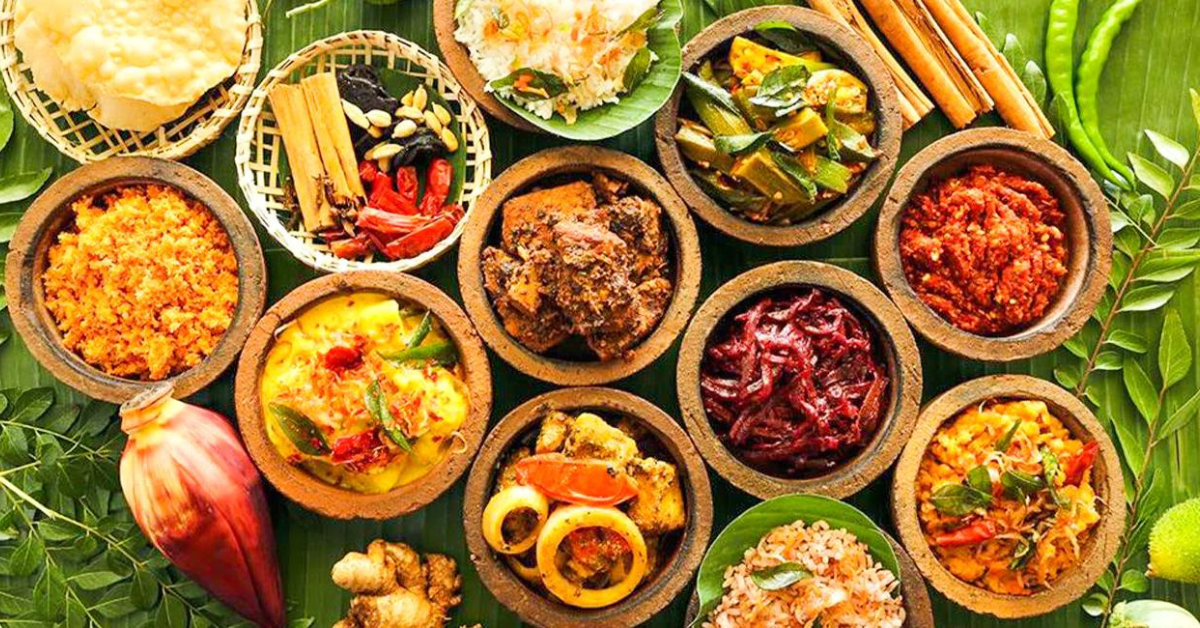
Sri Lankan traditional cuisine is a gastronomic journey that offers a blend of aromatic spices, diverse flavours, and unique cooking techniques. Rooted in ancient traditions, this island nation’s culinary delights celebrate the rich bounty of vegetables. And also provide numerous delectable vegan options.
Let’s delve into the world of Sri Lankan traditional cuisine with a special focus on the use of traditional vegetables and the abundance of vegan options that the island has to offer.
Sri Lankan cuisine draws inspiration from a myriad of cultures, including South Indian, Dutch, Portuguese, and British influences. The island’s history of trade and colonization has left an indelible mark on its culinary practices. As a result, Sri Lankan dishes are characterized by a harmonious blend of aromatic spices, tropical fruits, coconut, and an assortment of vegetables.
At the heart of Sri Lankan traditional cuisine lies an array of spices that set it apart from other culinary traditions. Fragrant spices such as cinnamon, cardamom, cloves, and cumin add depth and complexity to vegetable-based dishes. The famous “curry powder,” a combination of various ground spices, is a key element in Sri Lankan cooking.
Sri Lanka’s lush landscape and fertile soil give rise to an abundance of fresh vegetables. It makes them an essential part of the country’s cuisine. From the versatile coconut to the humble jackfruit and an array of leafy greens, Sri Lankan vegetables are a cornucopia of flavors and textures. Many of which are indigenous to the island. Locally grown vegetables, such as jak (jackfruit), Kiri ala (yam), Gotu kola (pennywort), and murunga (drumstick), form the heart of many traditional dishes.
Sri Lankan cuisine brims with vegan-friendly options, as it centers on vegetables. Many traditional dishes are naturally vegan or can be easily modified for a plant-based diet. Let’s explore some remarkable vegan delicacies
In summary, Sri Lankan cuisine caters perfectly to vegans, offering a diverse range of satisfying and delicious dishes. Whether you’re enjoying the creamy Parippu or the flavorful Pol Sambol, you’re sure to find vegan delights that tantalize your taste buds.
The beauty of Sri Lankan traditional cuisine does not solely lie in its delectable flavors; in addition, it fosters a communal dining experience. The culinary affair typically serves traditional Sri Lankan meals on a banana leaf, thereby adding a touch of rustic charm. Moreover, the diversity of dishes in a typical rice and curry spread ensures that it delights every palate.
Within Sri Lankan traditional cuisine, delicious vegetable-based dishes and vegan options are a true treasure trove. The harmonious blend of fresh produce, fragrant spices, and coconut milk elevates these recipes to culinary masterpieces. By exploring the richness of these veggie delights, one can experience the authentic flavors and cultural heritage of this island. Whether you are a dedicated vegan or a food enthusiast seeking a taste of the exotic, Sri Lankan cuisine offers a mouthwatering journey that leaves a lasting impression on your palate.

SatynMag empowers women with inspiring stories, expert advice, and uplifting content to fuel their strength and dreams
Welcome to Satynmag S Suite, online knowledge platform for career and personal growth. This is where you can empower yourself with cutting edge knowledge, latest know-how and grow.


